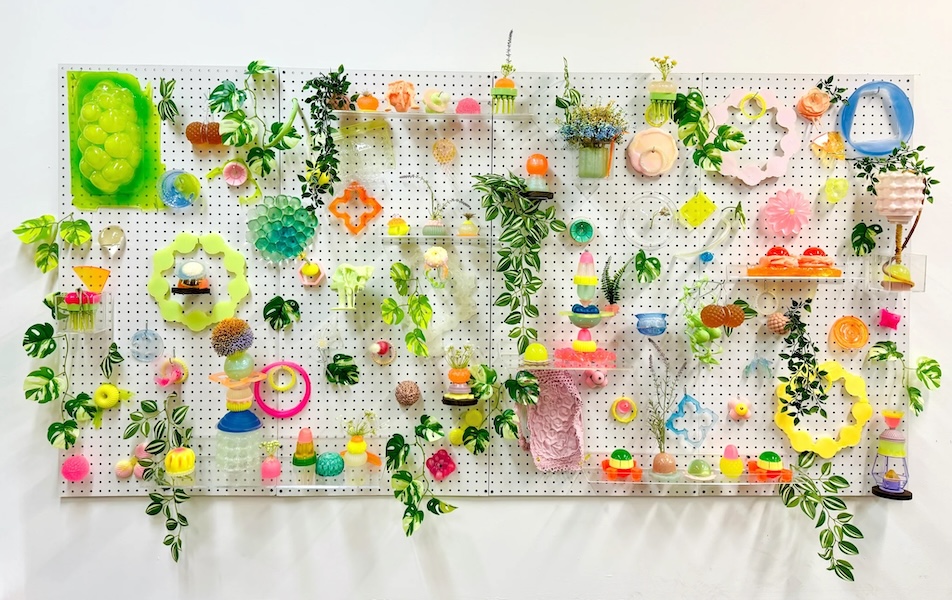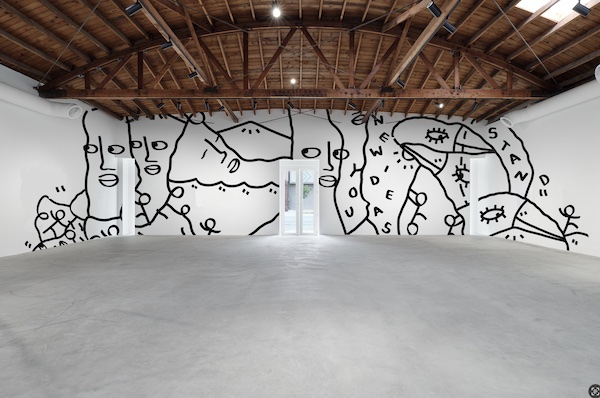Last month, “Escape Attempts” opened at the new Hollywood location of Shulamit Nazarian in Los Angeles. Curated by Kathy Battista, the inaugural group show features work by seven female artists—Carmen Argote, Susan Hefuna, Cindy Hinant, Alex McQuilkin, Sarah Meyohas, Virginia Overton, and Naama Tsabar—in conversation with Minimalism, a movement dominated by male artists like Donald Judd. Whitewall spoke with Battista about putting the show together, a more open feminism, and the connection to its namesake, Lucy Lippard’s 1972 essay of the same name.
WHITEWALL: “Escape Attempts” inaugurates the new Hollywood location of Shulamit Nazarian. How did you want to show to engage with the new space?
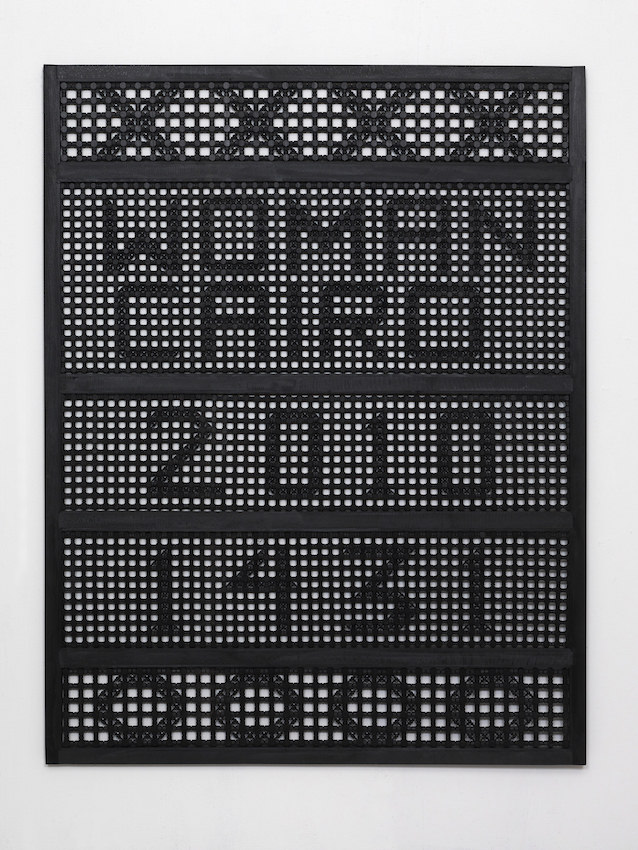
Untitled (Waterfall), 2016
KATHY BATTISTA: I wanted to curate a show that wouldn’t have been possible in the Venice gallery, for example, by showing larger, more ambitious works (such as Naama Tsabar’s Closer, 2014) as well as multiple works by each artist.
My vision for the show was for it to be visually stunning and also have an edge. I tried to find work that would make people look deeper, think further, and even interact with it, as in the Tsabar sculptures. I looked for work that was made in the vein of Minimal Art but that opened up conversations rather than being overly resolved. It was also important to me that it was an international group who came from different cultural perspectives.
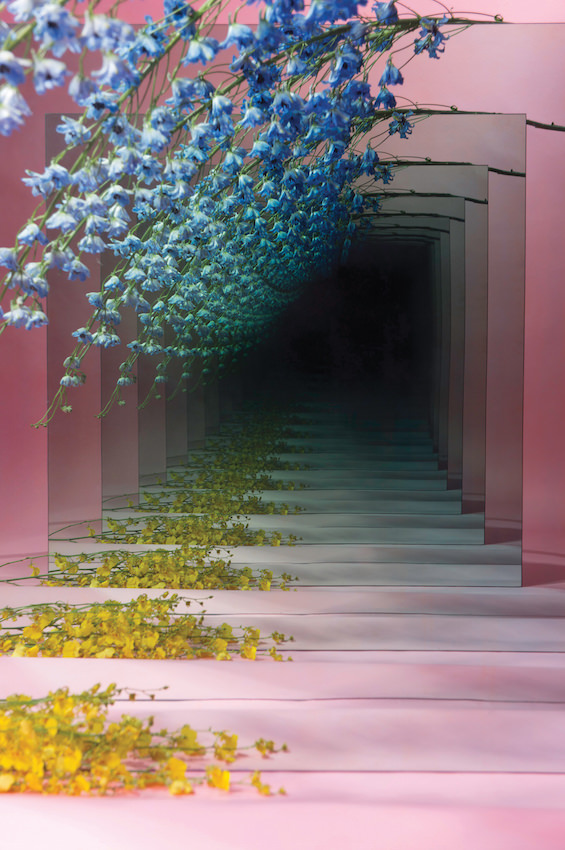
Trunk with decal, tissue box, and white noise machine
WW: The exhibition puts seven female artists in dialogue with Minimalism. How did you go about choosing the artists to be in the show?
KB: The show is intergenerational and international. Sarah Meyohas is in her twenties; Alex McQuilkin, Cindy Hinant, Carmen Argote, and Naama Tsabar are in their thirties; Virginia Overton is in her forties; and Susan Hefuna in her fifties. The idea germinated from one chapter of a forthcoming book of mine, New York New Wave: The Legacy of Feminist Art in Emerging Practice (published by IB Tauris). While most of the artists in this book look back to female role models, I was intrigued by those artists who openly acknowledged male predecessors: for example Cindy Hinant’s affinity for Dan Flavin, Sol LeWitt, and Dan Graham and Alex McQuilkin’s direct references to Gordon Matta-Clark.
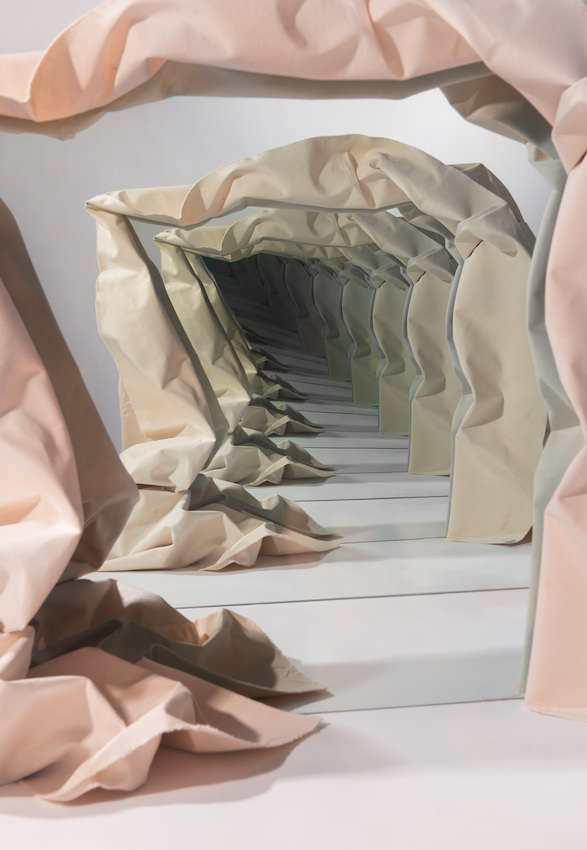
21 x 16 x 16 inches
KB: From there I looked outward to other locations, and found Carmen Argote (Los Angeles) and Susan Hefuna (Cairo/Dusseldorf). I wanted to show art that was steeped in Minimalism, yet putting a new spin on it. I hoped to have a range of mediums rather than any prescriptive look to the work. I wanted the works to dialogue with each other, which they do. For example, Carmen Argote’s Folding Structures deal with domestic architecture, class stratifications and nostalgia. Alex McQuilkin’s wallpaper paintings deal with the same concepts. Virginia Overton’s sculptures speak to Sarah Meyohas’ photographs. They all hang together so effortlessly.
WW: Why did you want to have the work of female artists in conversation with a movement dominated by men?
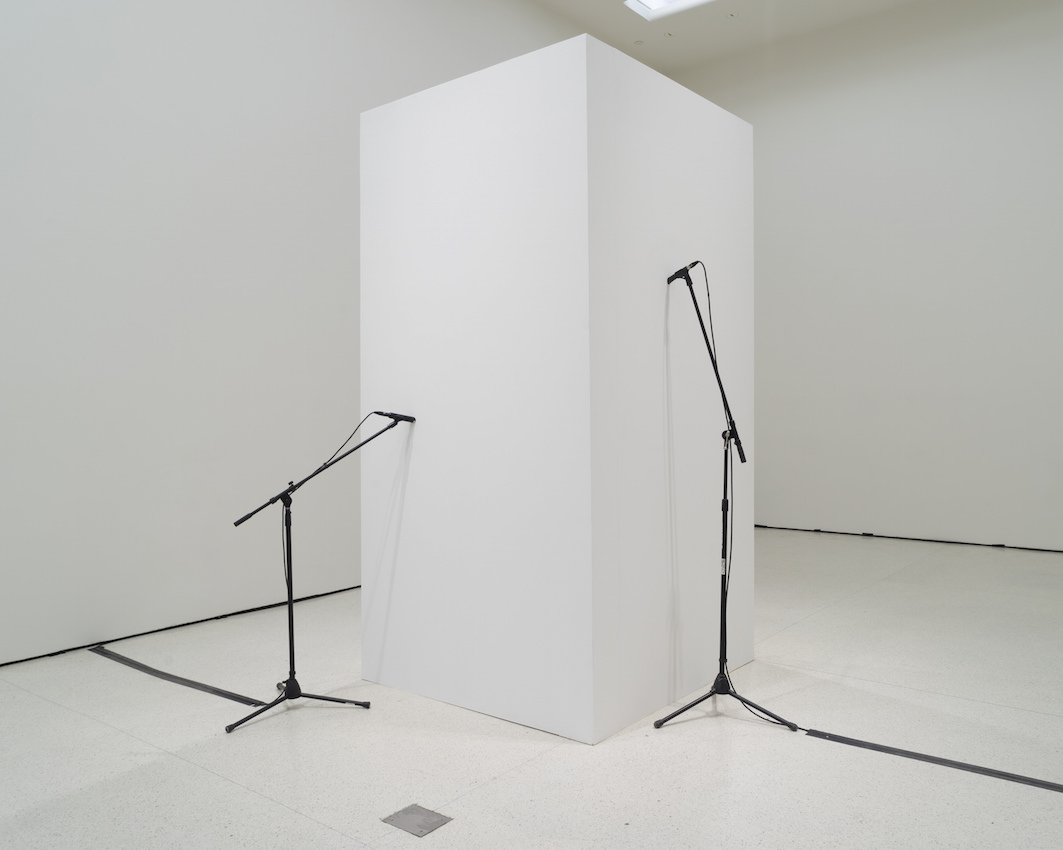
Installation view, 2016, Whitney Museum of American Art, New York
KB: I wanted to show that younger women artists are not compromised by referencing male predecessors and that being invested in feminism today doesn’t mean you have to follow any preordained set of rules. Sol LeWitt, Dan Flavin, Donald Judd, Dan Graham, were all touchstones for these artists, yet they still consider their work to be inflected by their female experience. In previous waves of feminist art, for example in the 1970s and 1980s, visual artists would avoid referencing male predecessors, except to critique them. The artists in this show have a more complex and multi-layered approach to their male and female forerunners. I love that feminism has become a more open place where the history of male artists can be part of that conversation. I also love that new constituencies, for example, transgender culture, have adopted feminism as a useful ideology.
WW: Are there ways in which they subvert the movement, though?
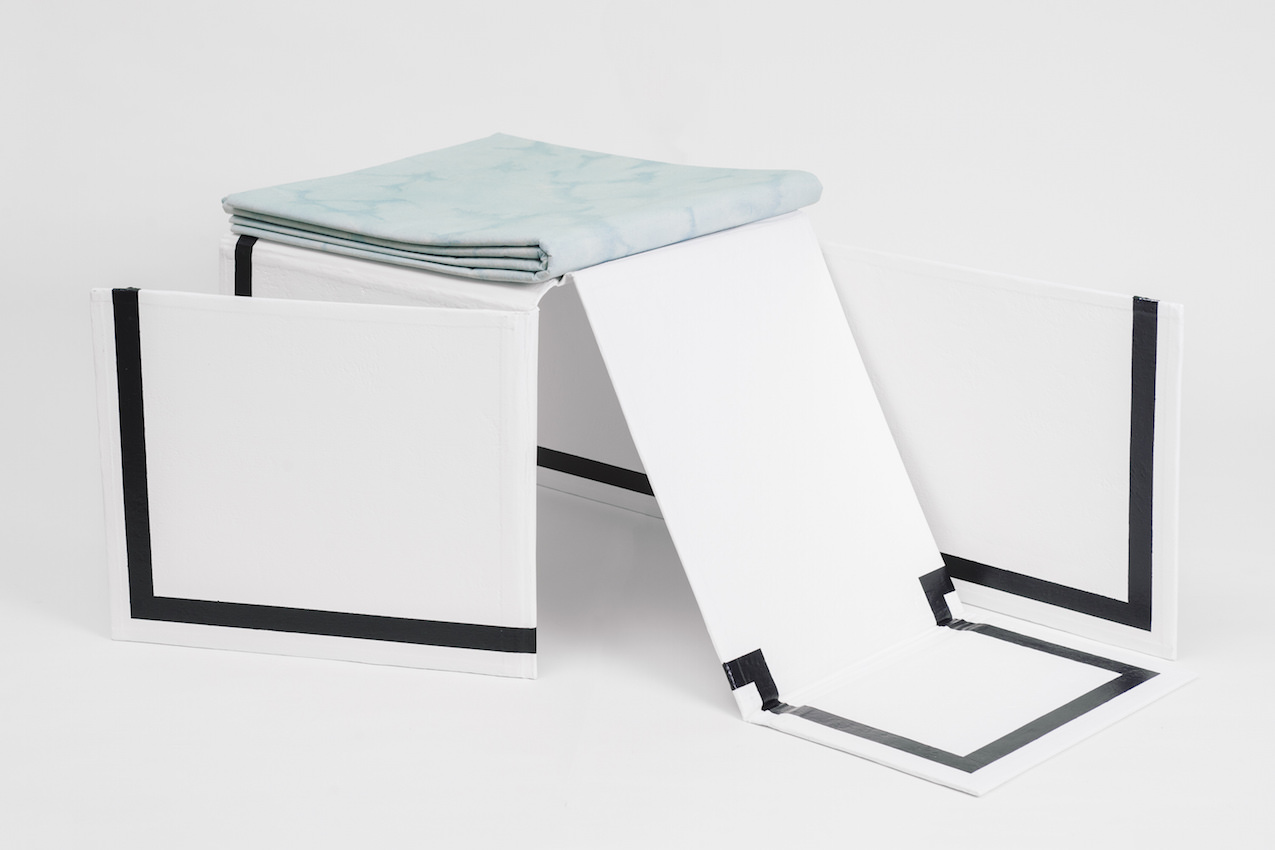
©Virginia Overton and Courtesy of White Cube, London
KB: These artists subvert the typical idea of Minimalism by several factors. First, they inject personal or subjective narrative into the work. Where a Minimal Artist of the late 1960s/1970s would say “the work is what it is”, with these artists there is more to the work than meets the eye. For example, Hinant’s monochromes appear as black frames, flesh colored paintings or monochrome videos. However, upon closer inspection the black Upskirts deal with what she terms “an aesthetics of violation”, which refers to how female celebrities are represented, and how they represent themselves, today. The obsession with getting a glimpse of a celebrity crotch is certainly a violation within the normal codes of conduct. However, celebrities now cultivate sex tapes and upskirts to increase their popularity and web trending. But the viewer only sees the content when she gets closer to the frames. With the flesh colored works, these look like monochromes but are actually made by the artist pressing her dirty, made up face against the paper at the end of each working day, leaving a print that over the course of a few months becomes a painting.
Carmen Argote, Alex McQuilkin, and Susan Hefuna also subvert traditional Minimal Art by inserting the personal and nostalgic into the work. Each of these artists draws on their own local and socioeconomic histories in the work through the use of Argote’s father’s unrealized architectural drawings, McQuilkin’s girlish New England wallpaper and linen patterns, and Hefuna’s mashrabiya screens.
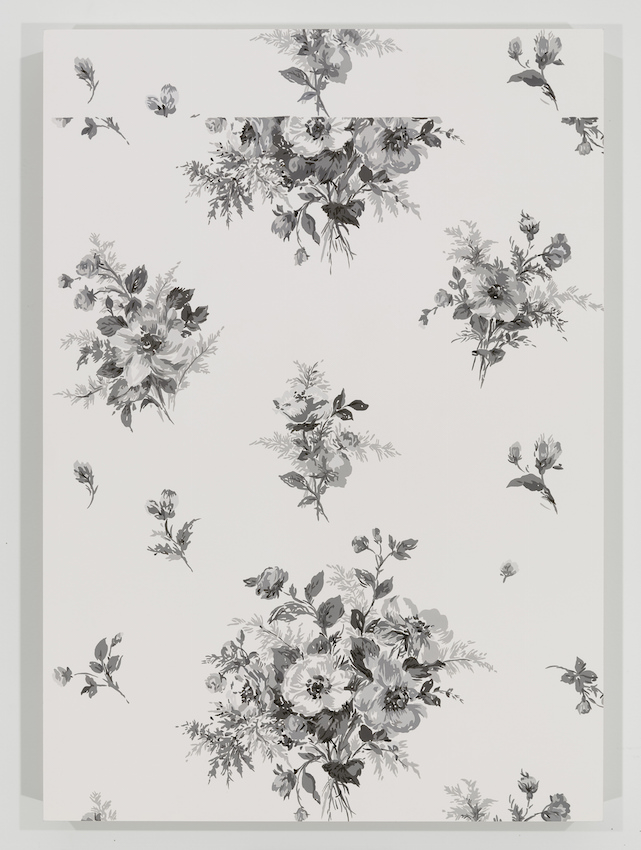
Photo: Ron Amstutz
Sarah Meyohas and Virginia Overton subvert through the use of “feminine” palettes of pink, flesh and purples. They also insert the figurative incident, which Robert Morris decried, into the work, through Meyohas’ props—flowers, canvas, etc—and Overton’s found objects.
WW: Minimalism is often associated with a feeling of coldness or indifference. Are there artists in the show who conversely invite viewers to engage more directly or emotionally with their work?
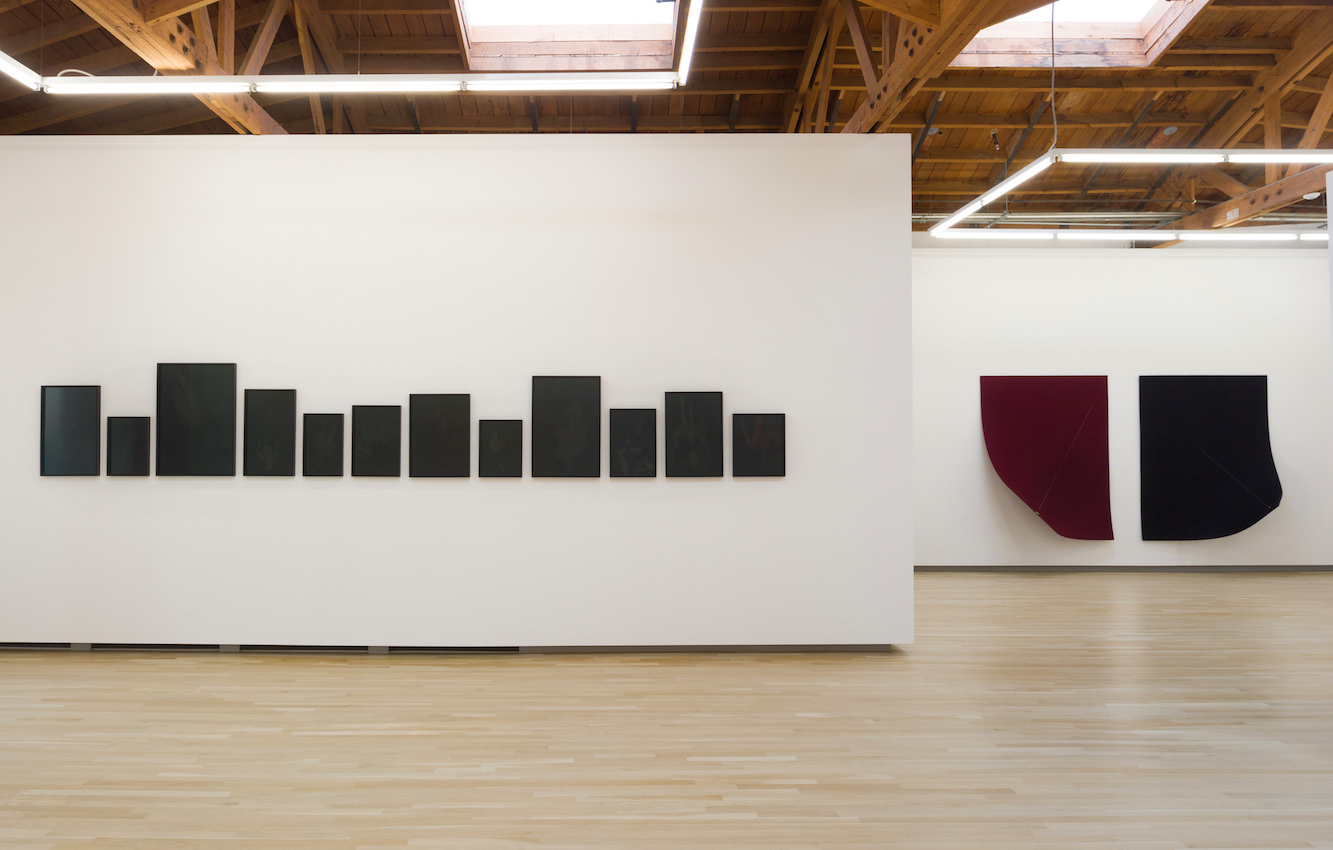
KB: Absolutely. Naama Tsabar’s sculptures are interactive. She and her performers, in particular Fielded and Sarah Strauss, created musical compositions that were played on the sculptures, which are wired to amps. Using drumsticks, their hands and body parts, the performers created stunning abstract aural compositions that brought the sculptures to life. These remain open to the possibility of interaction by gallery viewers for the duration of the exhibition. Tsabar invites viewers to touch them, which in the case of Closer actually means putting one’s hands inside the sculpture. This emotional and physical engagement with the object challenges traditional Minimal practice that would not have engaged the viewer as such. Touching one of Judd’s anodized steel sculptures is a conservation nightmare.
Sarah Meyohas said she wanted to make the viewer feel lured into her Speculation series photographs. The sense of infinity created by the two-way mirrors in the composition, rather than create a distance, creates the desire to step inside.
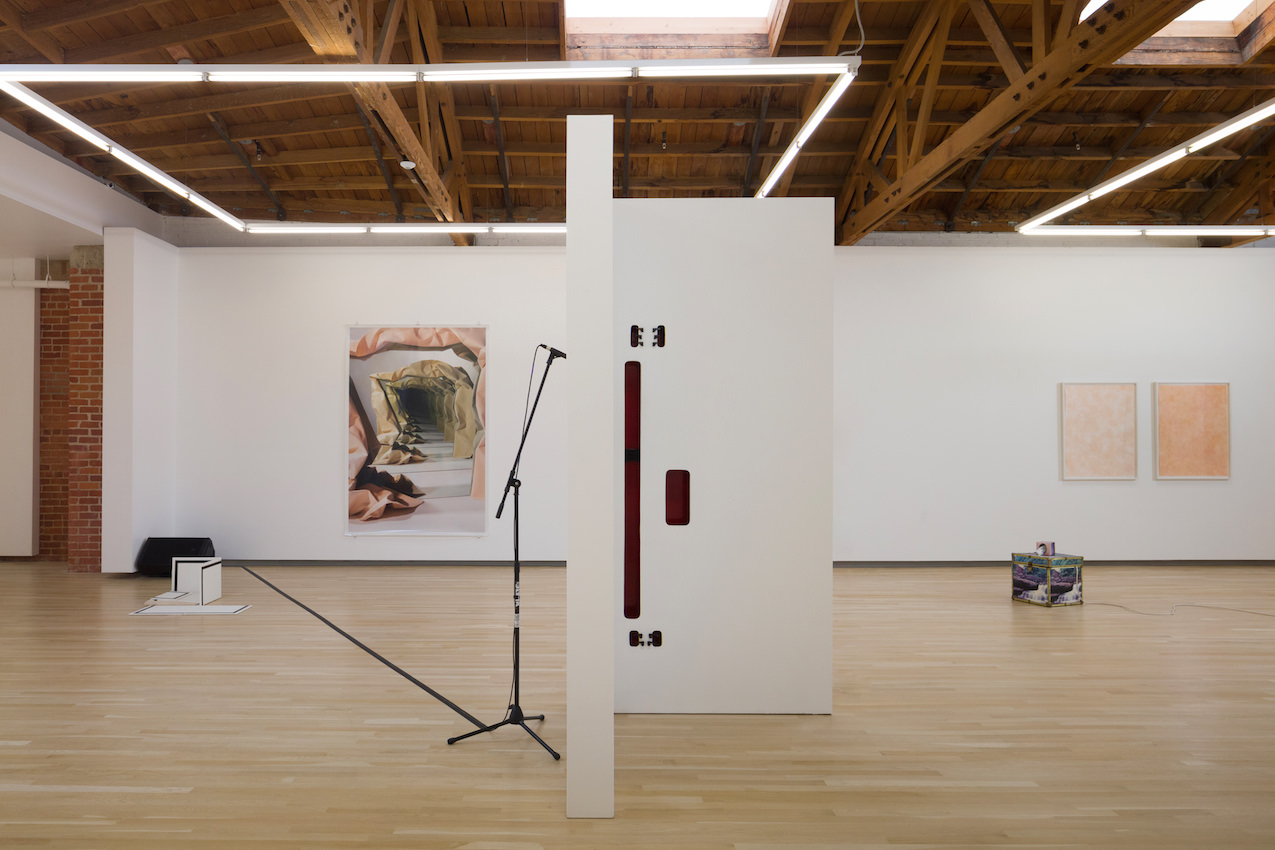
Susan Hefuna
Cindy Hinant’s Upskirts also challenge the coldness or indifference of first wave Minimal Art. Because the images are so much obscured, it requires the viewer to get closer to the work and have an intimate experience with each frame.
WW: The title of the show comes from the1972 essay by Lucy LIppard. What rings true from that essay today, even though it discussed issues of 60s and 70s?
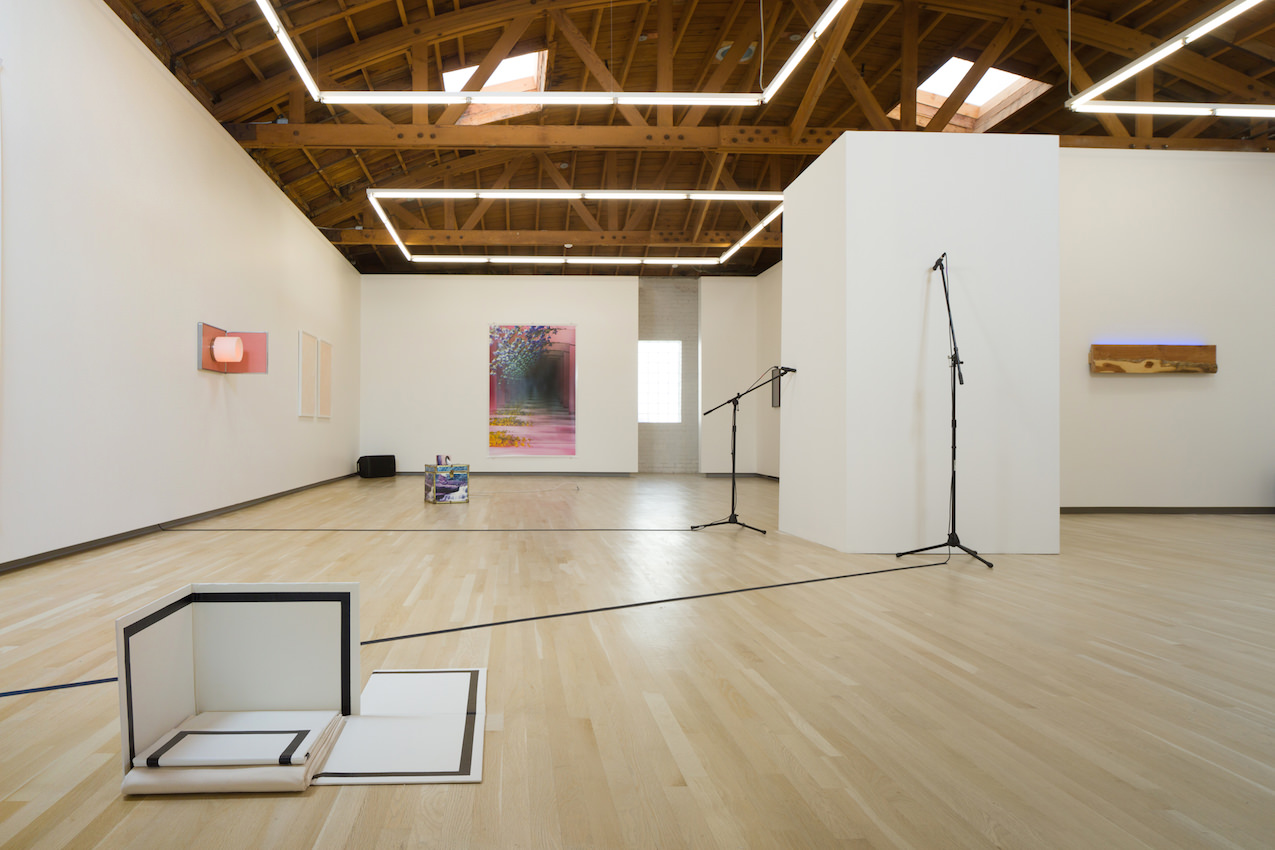
Woman Cairo 2010/1431, 2010
KB: What Lippard captures so well in that essay is the fact that artists are always in an ambivalent relationship with the past. How they navigate this relationship changes over time, but the need for originality is a central tenet of our modernist history. Each generation tries to release the shackles of the past. However, many of the younger artists in Escape Attempts, who grew up with the Internet and lead global lives, find originality in the layering of references and ideas. Minimal and feminist art can elide as can popular culture and philosophical ideas.
Also, Lippard’s essay was written during a time of great cultural conflict. Artists were responding to the atrocities of the Vietnam war, the continued struggle for civil rights and the women’s movement’s struggle for equal pay and treatment. Incredulously, many of these same battles are still up for discussion today. After eight years of progress, we find ourselves in a new regime where the basic rights of women, immigrants, and LGBT people are being challenged. This is for me the most important issue that ties to the exhibition. Art is a hugely important tool for social change and artists have always been engaged with political conflicts. Art is also what’s left after empires fall: when we look back to the Roman, Ottoman, or British empires, it is the art and architecture that remains. For me artists are the most important people in cotemporary society.
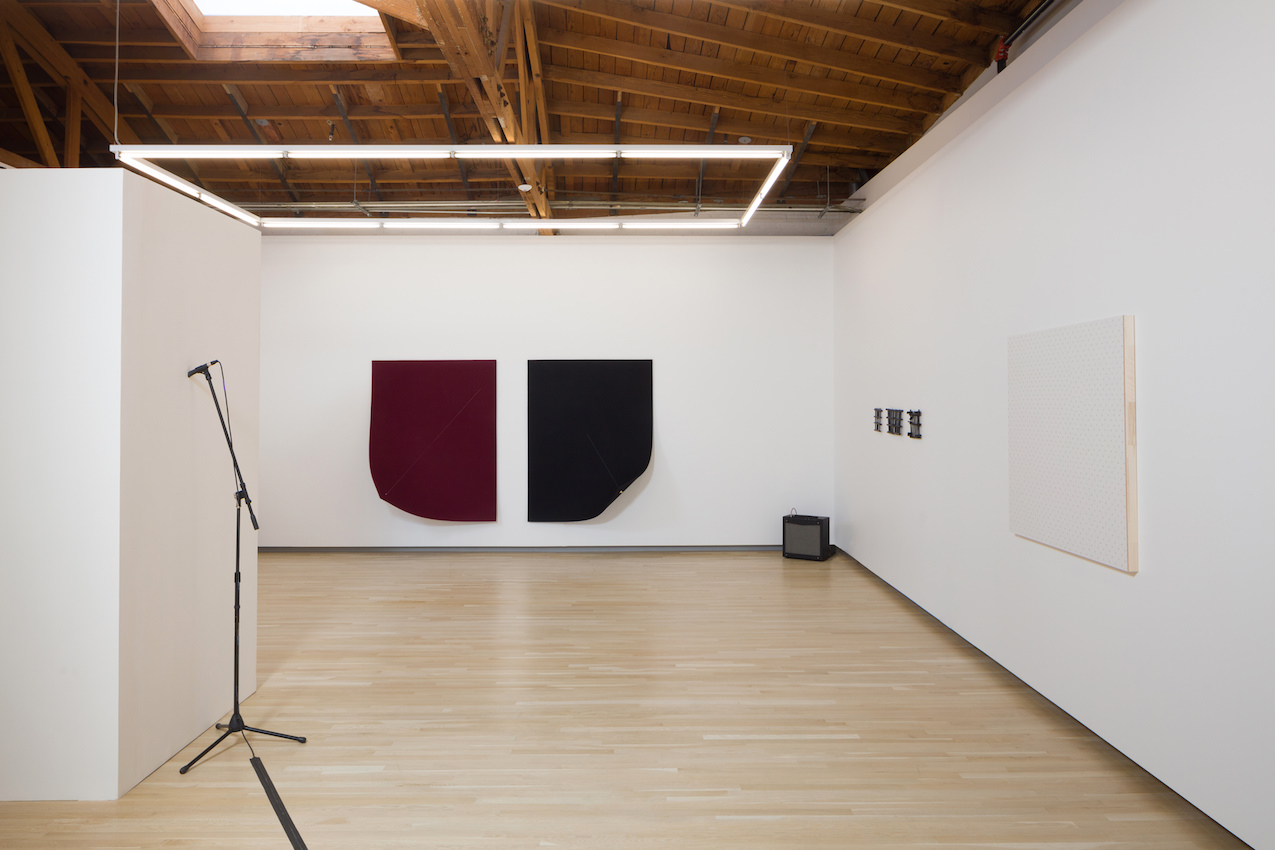
Ink on wood
“Escape Attempts” is on view through April 8.





